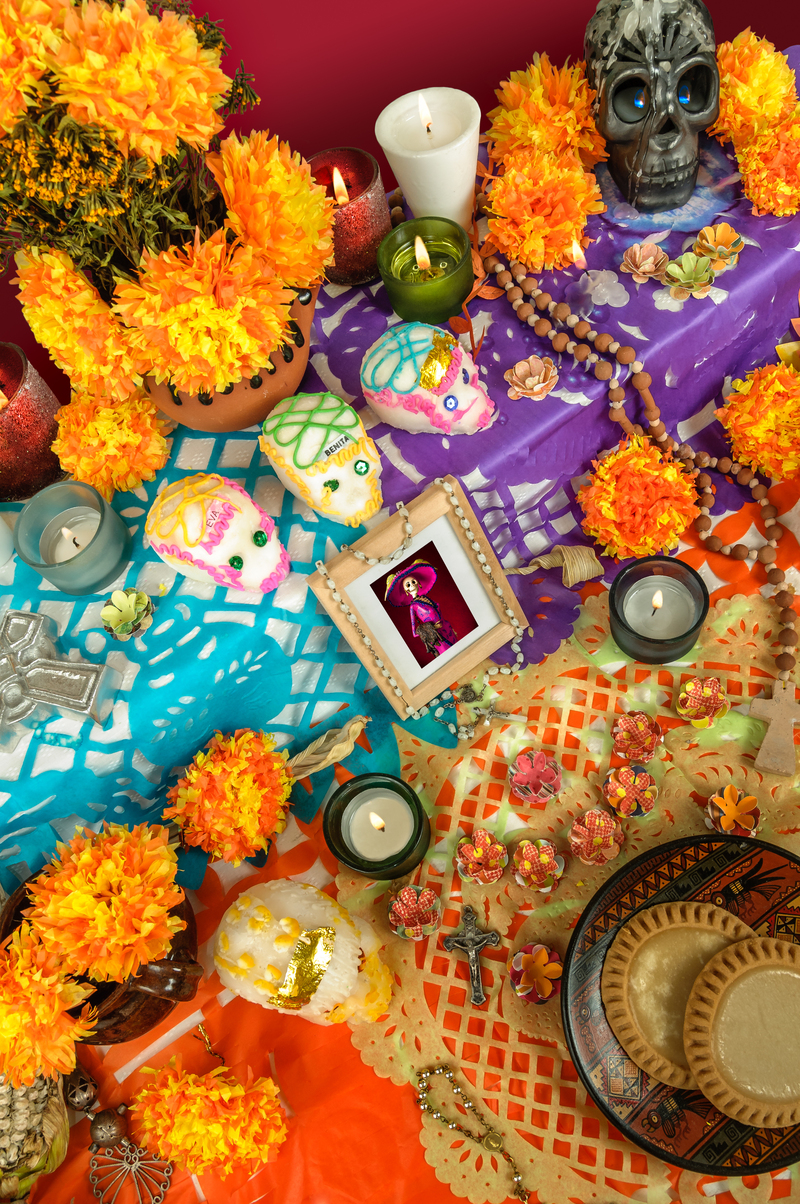Preserving the Elegance of Your Poinsettias
Posted on 13/08/2025
Preserving the Elegance of Your Poinsettias: A Comprehensive Guide
Poinsettias have become a holiday staple, adorning homes and public spaces with their vibrant crimson, cream, and pink bracts. While their festive beauty is unmatched, many struggle to maintain the allure of these iconic plants beyond the holiday season. If you're wondering how to keep poinsettias stunning for months or even rebloom them year after year, you're not alone. This detailed guide will provide all the insights and practical tips you need for preserving the elegance of your poinsettias.
Table of Contents
- Understanding Poinsettias: A Festive Icon
- Choosing Healthy Poinsettias
- Essential Care Tips for Poinsettia Longevity
- Water and Humidity Requirements
- Optimal Light and Temperature
- Fertilizing and Feeding Your Poinsettias
- Addressing Pests and Diseases
- Post-Holiday Poinsettia Care
- Encouraging Poinsettias to Rebloom
- Creative Poinsettia Displays and Arrangements
- Common Mistakes to Avoid
- Preserving the Timeless Beauty of Poinsettias
Understanding Poinsettias: A Festive Icon
The Poinsettia (Euphorbia pulcherrima) is native to Mexico and Central America, where it grows as a perennial shrub. These plants are famed for their striking red, white, or pink bracts (often mistaken for flowers) and their association with Christmas celebrations worldwide. With the right care, you can enjoy their vibrant elegance far beyond December.
Choosing Healthy Poinsettias
The foundation of preserving poinsettia elegance starts with your selection. A healthy plant is more likely to thrive with minimal effort. Here's what to look for:
- Rich, vibrant bracts with no signs of wilting or browning.
- Dark green foliage beneath the colored bracts; avoid plants with yellowing leaves.
- Sturdy, upright stems--floppy stems can indicate weakness or underwatering.
- No pests or mildew on leaves or soil surface.
- Unbroken branches and well-moistened, but not soggy, soil.
Tip: Never buy a poinsettia left out in the cold, as this can cause leaf drop and permanent damage.
Essential Care Tips for Poinsettia Longevity
Proper care is key to keeping your poinsettia fresh and elegant all season long. The following steps will help maintain the plant's beauty:
1. Ideal Placement
- Place your poinsettia in a spot free from drafts, radiators, and direct heat sources.
- Avoid locations with temperature fluctuations, such as near exterior doors or open windows.
2. Watering Routine
- Water when the soil feels slightly dry to the touch--not soggy or bone dry.
- Ensure pots have drainage holes and empty saucers after watering to prevent root rot.
3. Humidity Control
- Poinsettias enjoy moderate humidity--consider using a room humidifier in dry climates or group your plants together.
- Mist leaves lightly with water once a week, but avoid soaking bracts.
4. Light Exposure
- Bright, indirect sunlight is ideal--avoid hot, direct midday sun which can bleach leaves.
- Rotate the plant every few days for even light exposure and balanced growth.
Water and Humidity Requirements
To preserve the elegance of your poinsettia, proper water and humidity balance is crucial:
- Watering: Check the top inch of soil and water thoroughly when dry. Never let the plant sit in standing water.
- Humidity: Place the pot on a tray of pebbles with water (but not touching the pot's base) for consistent moisture in the air.
Overwatering or letting the soil dry completely are common mistakes that can shorten the life of your poinsettia.
Optimal Light and Temperature for Poinsettias
Maintaining the right lighting and temperature is essential for sustaining poinsettia elegance:
- Temperature: Aim for 60-70?F (15-21?C) during the day and not below 55?F (13?C) at night.
- Sunlight: Place your plant near a window where it gets at least 6 hours of bright, filtered light daily.
Sudden temperature drops and drafts can cause leaf drop--be especially mindful in winter.
Fertilizing and Feeding Your Poinsettias
While your poinsettia is in bloom, it usually doesn't need extra fertilizer. However, to prolong your poinsettia's elegance after the holidays:
- Begin feeding the plant in late winter to early spring once new growth appears.
- Use a balanced, water-soluble fertilizer (such as 20-20-20) every 3-4 weeks.
- Do not over-fertilize; too much nitrogen can encourage leaves at the expense of colorful bracts.
Proper nutrition is key for healthy regrowth and vibrant color for years to come.
Addressing Common Poinsettia Pests and Diseases
Maintaining your poinsettia's beauty also involves guarding against pests and illness:
Pests to Watch For
- Whiteflies: Check for tiny white insects under leaves; treat with insecticidal soap.
- Spider mites: Look for webbing or stippled leaves; increase humidity and gently wash leaves.
- Fungus gnats: Prevent by reducing overwatering and allowing the topsoil to dry between watering.
Disease Prevention
- Good air circulation and well-drained soil reduces the risk of fungal infections.
- Remove any yellowed or fallen leaves promptly to prevent spread of pathogens.
Inspect your plant regularly and act swiftly at the first sign of trouble to preserve its appearance and health.
How to Care for Poinsettias After the Holidays
Many believe that poinsettias are disposable, but these resilient plants can be enjoyed year after year. Here's how to transition your plant after the festive season:
- Gradually reduce watering as the bracts begin to fade in late winter, allowing the plant to rest.
- Cut the stems back to about 4-6 inches tall in early spring. This encourages new growth.
- Repot if needed using quality potting soil; this promotes root development and robust foliage.
- Resume regular watering and feeding once new growth appears.
- Move outdoors after the danger of frost is gone, gradually acclimating your plant to brighter light.
This post-holiday care will help ensure your poinsettia remains healthy and vigorous all year long.
How to Encourage Poinsettias to Rebloom
Perhaps the ultimate sign of mastering poinsettia care is getting your plant to rebloom in time for the next holiday season. Here's a timeline to follow:
1. Late Spring to Summer
- Grow your plant outdoors in partial shade, fertilizing periodically and watering as needed.
2. Early Fall
- Bring the plant back indoors before nighttime temps drop below 60?F.
3. The Critical Dark Period
- Starting in late September or early October, provide complete darkness for 14 hours each night for 6-8 weeks. Place your poinsettia in a dark closet or cover with a box starting at 5pm, returning to bright light at 7am.
- Continue normal watering and fertilization during the day.
4. Bud Emergence and Color Change
- By mid to late November, you should see color development in the bracts. Stop the dark treatment, and let your plant shine in a sunny display area.
Consistency in light and dark cycles is essential for successful reblooming.
Creative Poinsettia Displays and Arrangements
To further highlight the timeless elegance of poinsettias, consider creative arrangements and displays:
- Mix with evergreens for festive centerpieces or mantle accents.
- Pair with contrasting foliage plants like ferns or ivy for texture and color.
- Use decorative pots and containers that echo your holiday decor scheme--or update them for the new year.
- Incorporate cut poinsettia bracts into floral arrangements, soaking their stems in hot water first to prevent sap leakage.
With proper care, your poinsettias can be the stars of your interior design long after the holidays.
Common Mistakes to Avoid When Caring for Poinsettias
- Overwatering: Leads to root rot and premature leaf loss.
- Exposing to drafts or extreme temperatures: Causes leaf and bract drop.
- Allowing soil to get bone dry: Results in wilting and stress.
- Placing in insufficient light: Causes faded colors and weak stems.
- Skipping the dark period: Prevents reblooming for the next season.
Avoid these pitfalls to preserve the elegance of your poinsettia year-round.
Conclusion: Preserving the Timeless Beauty of Poinsettias
With a little attention and proper care techniques, preserving the elegance of your poinsettias is easily achievable. By selecting healthy plants, providing optimal water, light, and nutrition, and learning how to encourage re-bloom, you can enjoy these iconic plants far beyond the holiday season. Remember, a well-tended poinsettia is not just a seasonal decoration, but an enduring display of cheer and sophistication in any home.
Take pride in your efforts--your elegant, thriving poinsettia is a testament to attentive indoor gardening and a beautiful centerpiece throughout the year!
Keywords: preserving poinsettia elegance, poinsettia care, keeping poinsettias fresh, poinsettia longevity, reblooming poinsettia, poinsettia maintenance, healthy poinsettia tips.


Latest Posts
10 Low-maintenance Plants Ideal for Stress-free Office Spaces
Preserving the Elegance of Your Poinsettias
The Love Story Told by Red Roses on Valentine's Day





